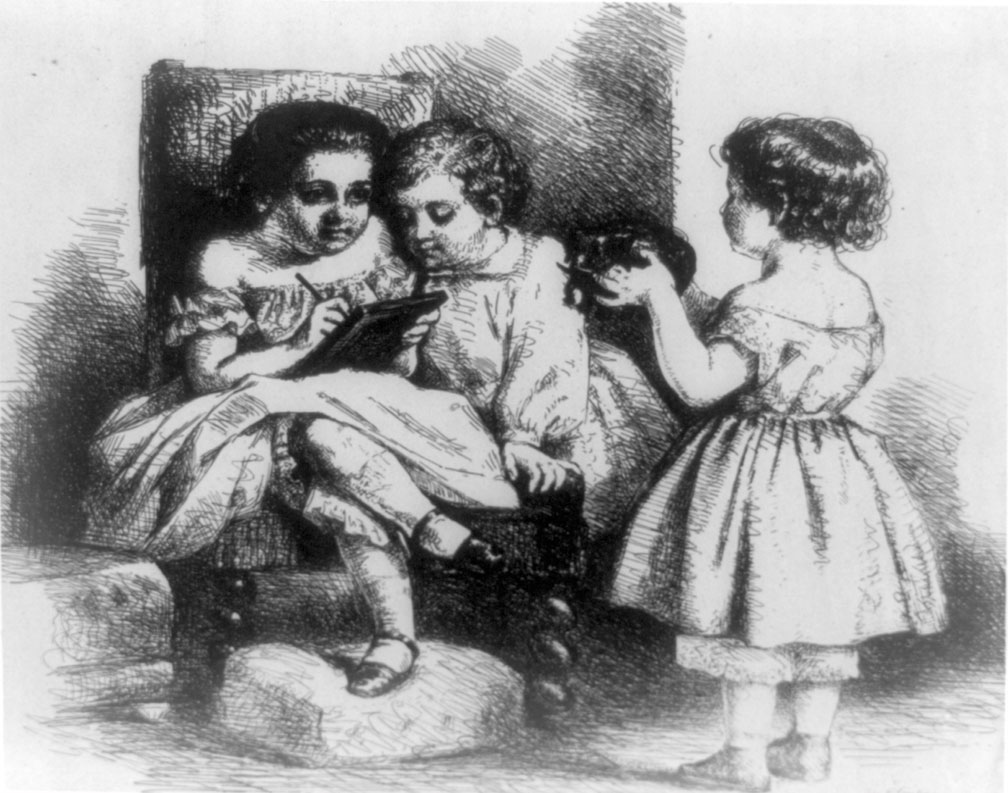Charleston

Most children in the new nation did not have easy lives. Children were about ten times more likely to die before they reached their first birthday than children today. Eight to ten percent of children died between ages one and twenty-one. If they survived to become children or teenagers, most were put to work in the family business, usually a farm. Children were frequently beaten for what seemed to be minor offenses. Although many children were taught basic literacy, few were educated beyond that point.
In a nation of relatively informal manners, children were the only ones required to make outward signs of respect. While adults usually shook hands in greeting, children were taught to take off their caps, bow or make courtesies to show respect to elders. This was called "making your manners."
A Boston schoolmaster even published a book, entitled, The School of Good Manners, which had 163 rules to follow and 8 "sins" to avoid. "At table ... do not ask for anything. Wait until it is offered to thee ... Do not look at another person's plate or upon his meat. Do not look earnestly on anyone that is eating. Spit not in the room, but in the corner, or rather, go out and do it abroad." In addition to mealtime etiquette; these rules described appropriate behavior at church, at school, on the street, with other children, with adults, and in a number of other situations. Beyond showing respect to elders, however, it seemed that The School of Good Manners was either not read or not heeded by most families.
Children's clothing varied according to the wealth of their families. In general, however, both boys and girls wore loose muslin frocks until they were about four years old. Girls stayed in frocks until they were about eleven years old, while boys wore "skeleton suits." These suits features long, tight-fitting pants and tight jackets, and distinguished them from girls their age and from older men. Older children wore simplified versions of adult clothes.
 >
>